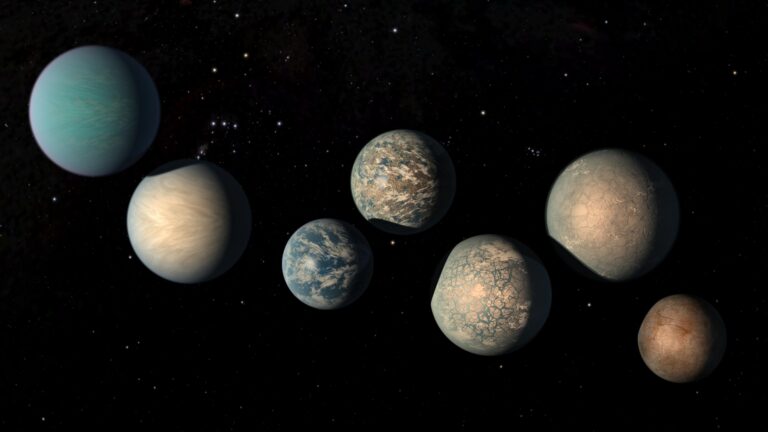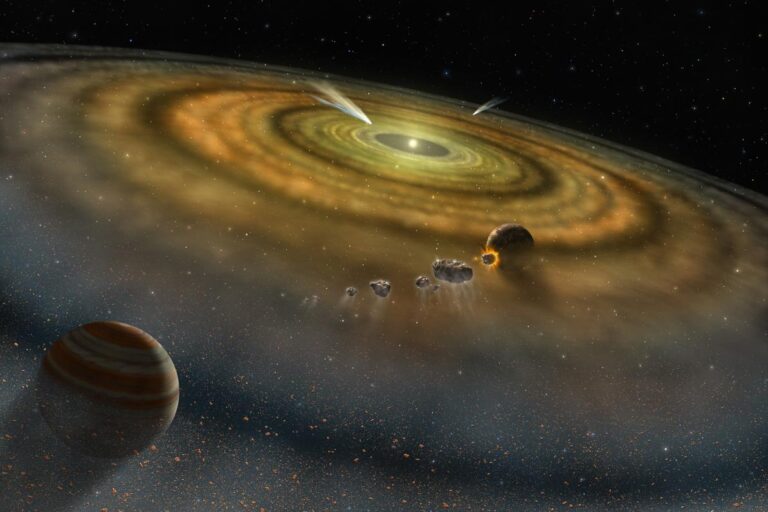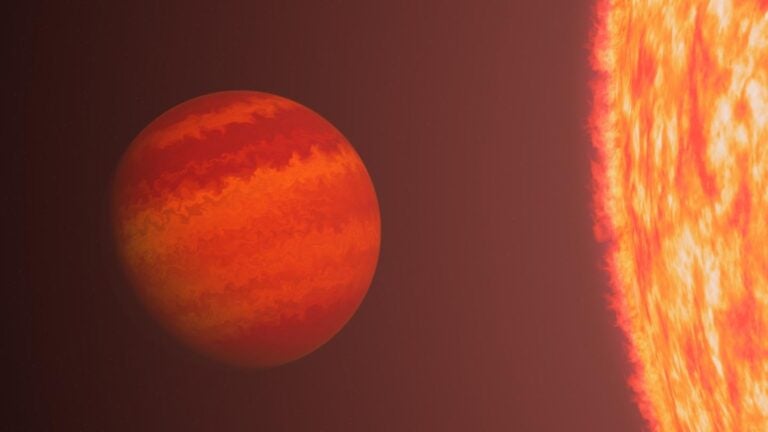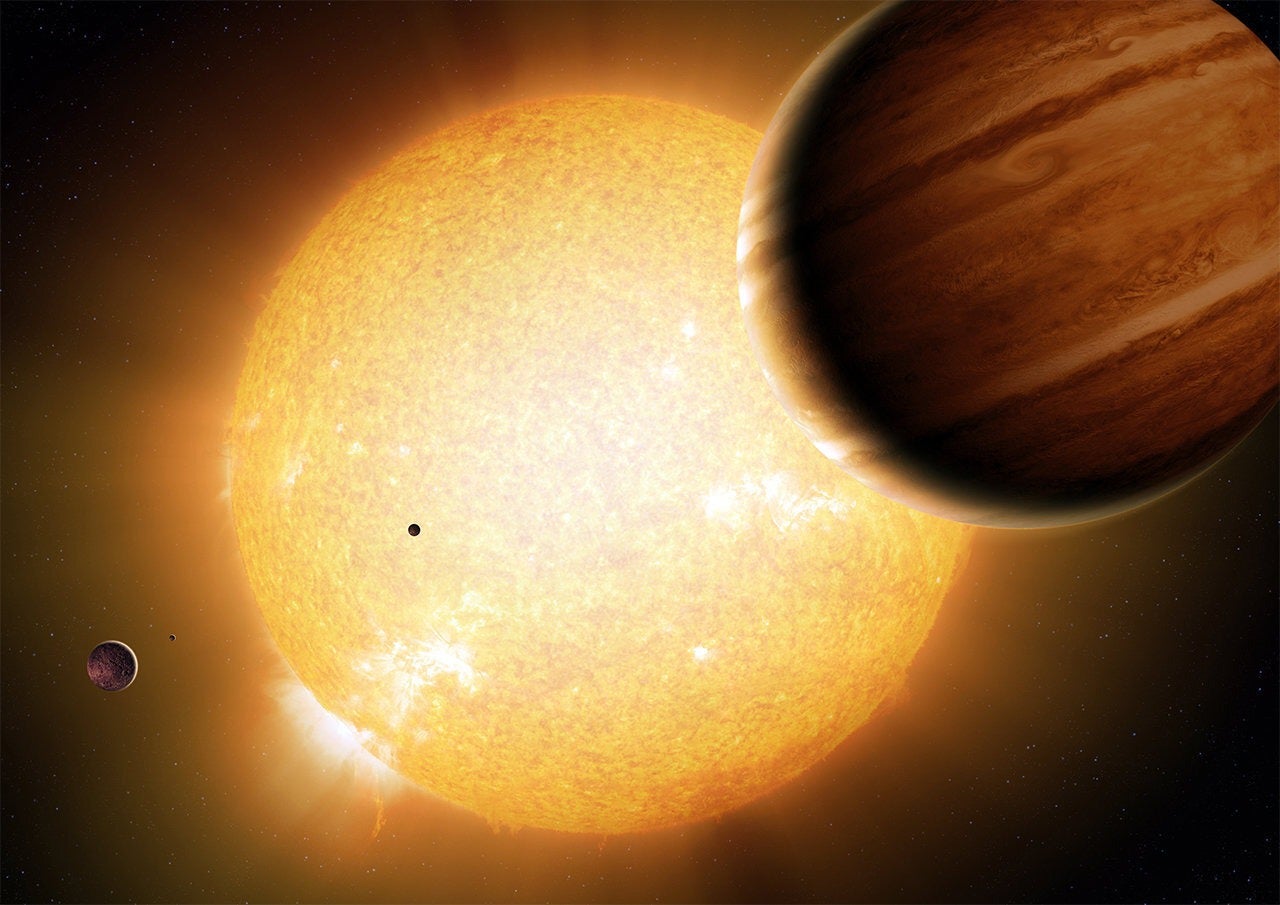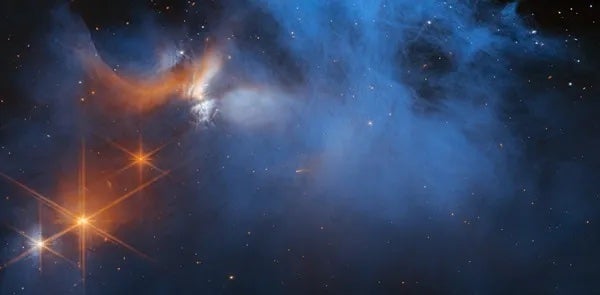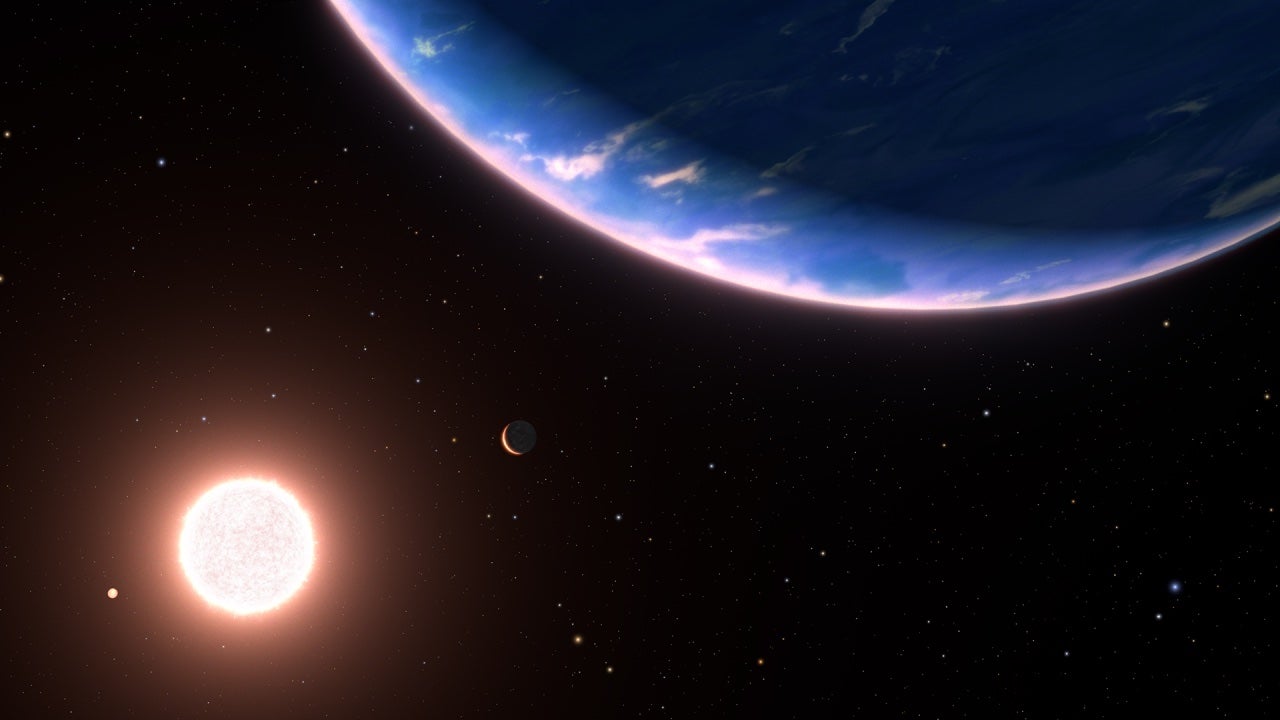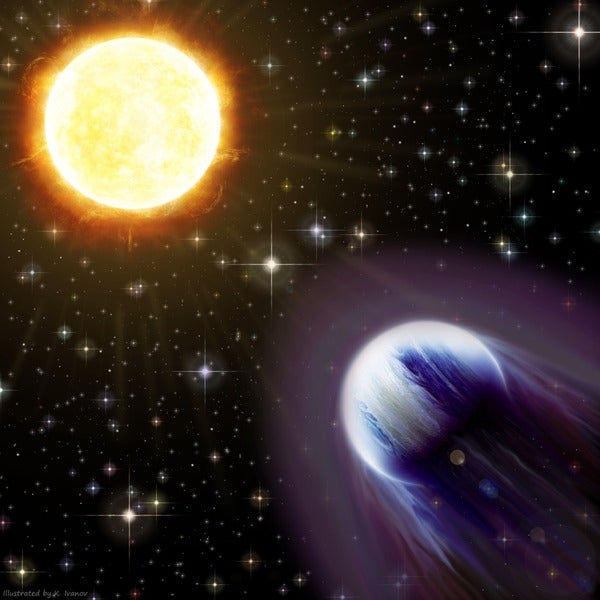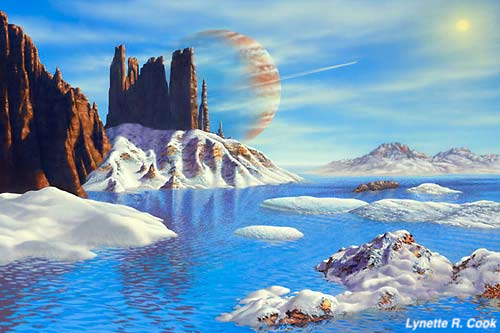
Astronomical websites and press releases brim with pictures of swirling gas giants, watery terrestrial worlds, and strange planetary systems with exotic suns. But just how realistic are these artist’s concepts? Do they truly show newly discovered worlds, or are they simply fanciful pictures meant to draw you into reading about the latest addition to the exoplanetary menagerie?
The process
“These aren’t just people slapping up a new exoplanet template every time that one is discovered. This is a real depiction, if we can have one,” says prominent exoplanet artist Lynette Cook, who has been illustrating other worlds since 1995. “It’s based on scientific fact, as far as the facts go that we have. And then beyond that, it’s fact-based theory.” Even when artistic license is involved — which it often is — “it is at least within the boundaries of what seems plausible,” she says.
But how do we even know what’s plausible? Illustrating an extrasolar world for a publication or press release, Cook says, starts and ends with conversations. The artist works closely with researchers to learn as much as possible about the planet or system they’ve been tasked with depicting. The researchers may start by providing information about the star — such as age, mass, and type (a proxy for temperature) — as well as the mass and distance of the planet.
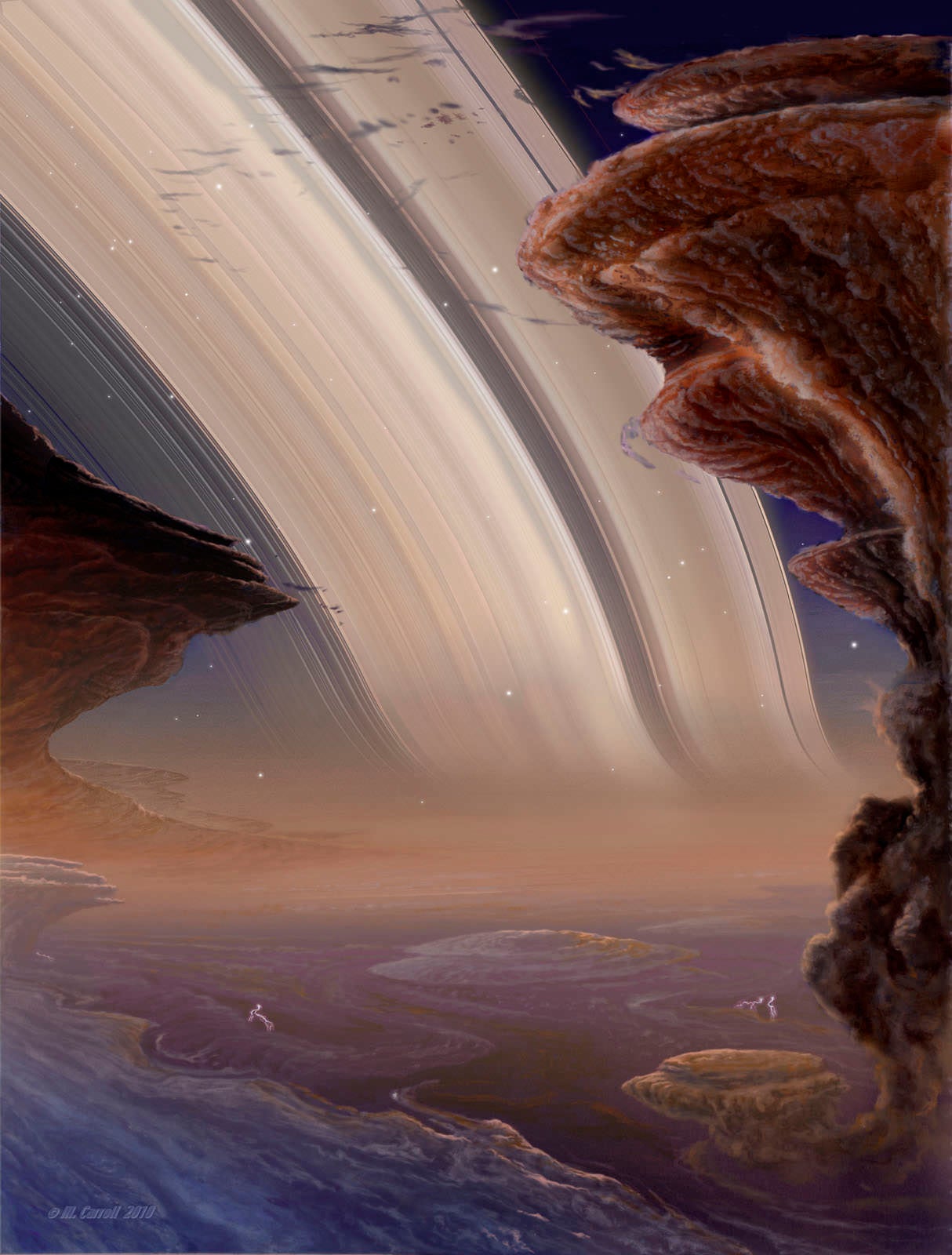
That may seem like only a basic framework, but hidden within these few numbers is a wealth of information. Stars with different temperatures put out their maximum light at different colors — cool stars are red, middling stars are orange-yellow, hot stars are blue — so the star’s type tells the artist its color. Its age determines whether it might have few or many starspots (what we call sunspots on the Sun) as well as how active it’s likely to be. A planet’s mass dictates whether it is terrestrial or gassy, while its distance informs the size its sun appears in its sky and whether the world sits in the habitable zone, and thus whether surface water is liquid or ice (or likely not present at all). And tidally locked planets — those with one side permanently facing their star — can have vastly different features than those that are not.
Astronomical artists take these seemingly disparate bits of scientific data and “synthesize all those aspects to show us what it would be like to be in those places,” says William Hartmann, a noted planetary scientist and artist who has been envisioning planets around other stars since before any had been discovered.
Often, the artist will make several mock-ups, going back and forth with the researchers to determine which is best and any details that might need adjustment, Cook says. After all, many planets look similar, so it is typically the small details that differentiate one from another.
Those details increasingly require less guesswork. Watching the way light filters through an exoplanet’s atmosphere as the planet crosses in front of its star can reveal the structure and chemical composition of otherworldly atmospheres. The presence of certain molecules can dictate the color the planet might appear — red and tan like Jupiter, blue like Neptune, or perhaps a hue absent from our own solar system altogether, such as purple or pink.
And some researchers are modeling the surfaces and climates of exoworlds, showing what distant planets could look like based on different scenarios. By tweaking factors such as ocean salinity and atmospheric composition on a watery world, for example, such models can produce simulated, generic global maps of ocean, land, and ice, which artists can then turn into a stunningly realistic — and scientifically plausible — image.
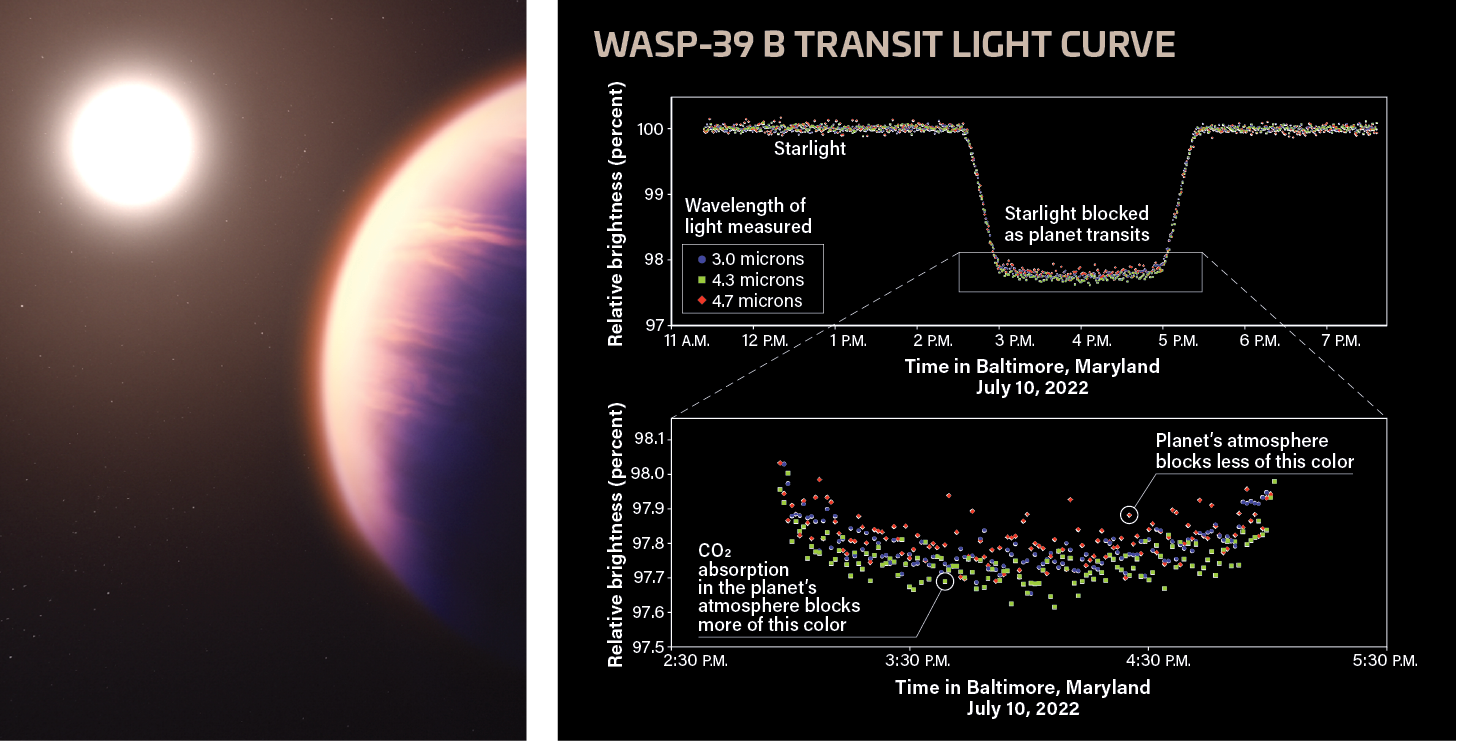
Artistic license
With these details in hand, an artist can go about creating a compelling exoplanet surface view. For Hartmann, two things are most important: “What interesting things might be seen in the sky, and what sort of surface do we want to depict?” He likes to imagine views from planets in star systems and situations unlike our own — for example, he says, a planet whose central star has been thrown out of its parent galaxy during a galactic merger.
Regardless of the view, one of the most challenging concepts to communicate in alien landscapes is a sense of scale, says longtime science writer and illustrator Michael Carroll, whose art often includes the worlds of our own solar system as well as those beyond. Sometimes a planet, moon, or asteroid doesn’t have an atmosphere, “so you don’t have those visual cues that we do in nature here.” But even then, “you can fake it a little bit” for the sake of providing a familiar perspective the audience can connect with, he says.
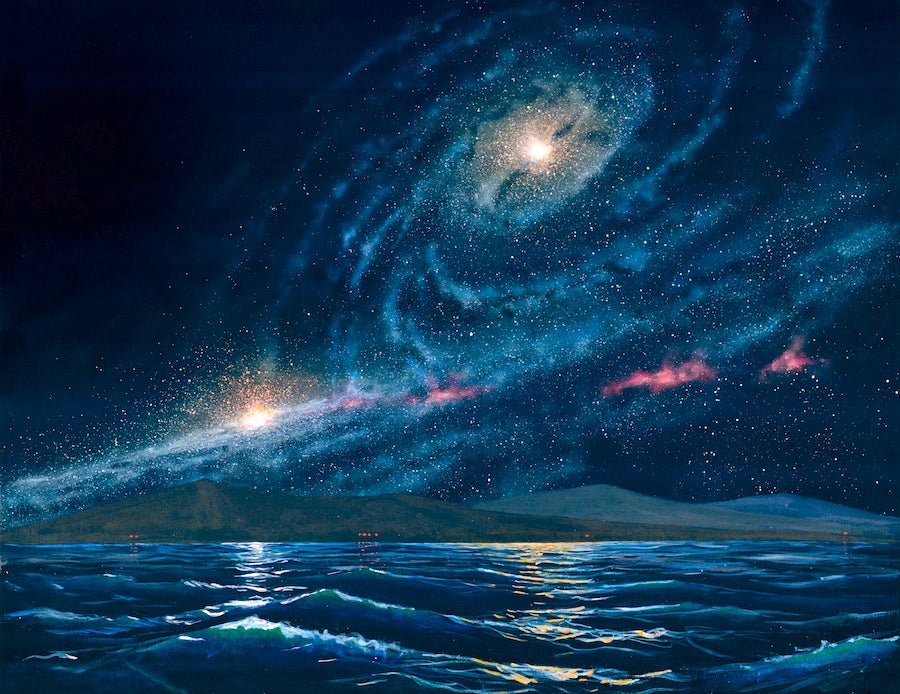
After all, these stunning illustrations are meant to educate. “The astronomical artist builds a bridge between that abstract pile of information and something that an untrained person can understand,” Carroll says.
Cook agrees that sometimes a bit of artistic license is called for — and vital. For example, when showing an entire system of planets from the perspective of a distant ice giant, the innermost planets near the host star would simply look like tiny dots, rather than visible spheres. But, she argues, such a realistic depiction would confuse the general public. A layperson might have trouble finding those inner planets among the background stars. “So, I would make [the inner planet] a little tiny circle,” she says. “Now, that’s artistic license, but it’s also part of the education process.”
In some cases, Cook adds, she’s given more latitude, such as setting the view of a known gas giant on the surface of a hypothetical moon to “put this really gorgeous landscape in the foreground … so it’s all gorgeous and you feel like you’re standing on it.”
In other cases, researchers might only want to show what is known and nothing else, which can present its own kind of challenge. “If you’ve just got a gas giant, then it’s a matter of, how do I make it look different from all the gas giants that I’ve already painted?” she says. “It has to look like the thing it is, but you don’t want to just totally recreate the same thing over and over again, so that becomes more of an artistic challenge rather than a scientific challenge.”
Ultimately, it’s about not only educating, but also about creating something new, Carroll says: “You can do a diagram, you can do a painting that shows everything just great and is totally uninspired. Or you can try to bring a little bit of beauty into the world.”
Art as history
“Astronomical paintings are our best record of what human beings thought other worlds were like, during different decades,” William Hartmann says — better even than scientific journals, where findings are published piecemeal as individual papers over time. “Scientists tend to be trained in one technique and so we have articles on one aspect at a time: spectroscopy through telescopes, computer models of orbit evolution, meteorology of atmospheres, geochemistry, petrology of rock samples, etc.,” he says. But to paint an alien landscape and sky, artists must combine all these details to create a complete picture of how we understand such places might appear, based on the available information at the time.
Which is why, he adds, “I tell museum curators, ‘If you have older astronomical paintings that are ‘incorrect’ according to current knowledge, for heaven’s sake, don’t throw them out!’ ” — A.K.
Similar but different
In the decades since the first discovery of an extrasolar planet in 1992, the field has veritably exploded, with more than 5,000 confirmed planets known today.
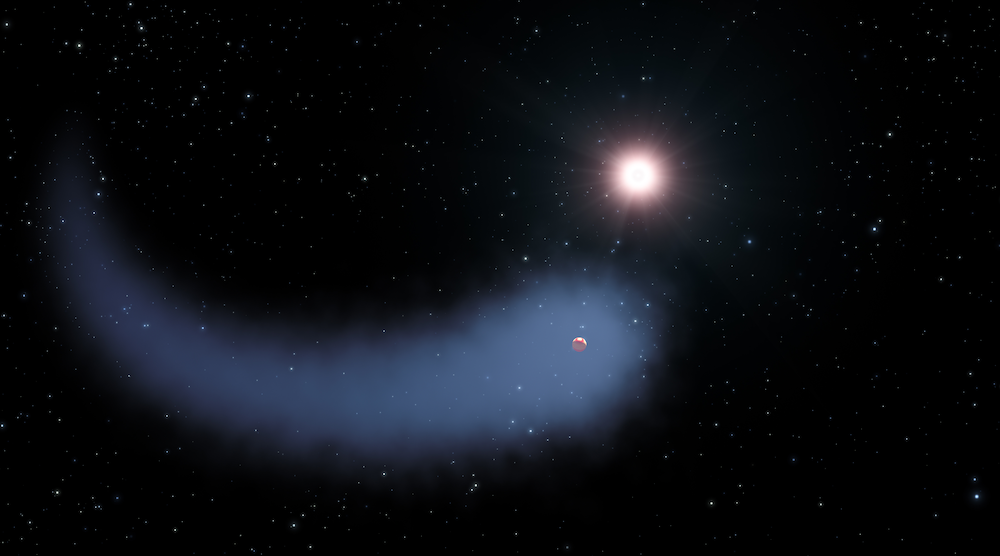
Still, many images found in news stories or press releases look similar. And it’s not despite the deluge of scientific data; it’s because of it. Although astronomers are still hashing out the details, we do know that the overall process of building planets is remarkably uniform throughout the galaxy: All planets seem to form from the disk of debris left over after their parent star has ignited, though even tiny variances can render vastly different planets and systems over time.
That means our own solar system often serves as a jumping-off point. For example, ice crystals still form even in low- or no-pressure conditions, and features like dunes can be found across the solar system, on planets, dwarf planets, and even comets. “You have to be careful with analogues,” Carroll says, “but they’re really the backbone of what informs us as to what these exotic worlds will look like.”
And some might be truly exotic. In lower gravity, “a tower of ice can be five times as tall,” Carroll points out. Or, Hartmann says, “a red and blue pair of stars in a double star system would create shadows in different colors. The shadow cast by the red star would get only light from the blue star, hence be bluish, and vice versa.”
With so many planets known, and more to come, there are plenty of options, both exotic and familiar. So although each illustration comes from the imagination of an artist, it is an informed, careful depiction of what could be reality that is designed to both educate and inspire.
More astronomy art
The July 2022 issue of Astronomy is a special collector’s edition featuring an inside look at the space art genre, written by prominent artists including William Hartmann. Inside, you’ll find an exclusive gallery of space art not collected anywhere else. You can purchase a copy today at MyScienceShop.com..



